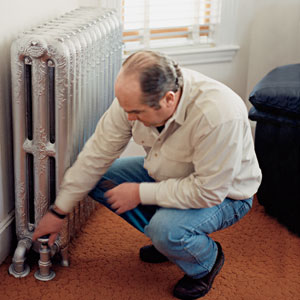HVAC ductwork issues can go unnoticed for some time before an unpleasant and sometimes costly discovery. The efficiency of this air delivery system directly influences the performance of a home's furnace,
air conditioner or heat pump.
A home's HVAC may be losing as much as thirty percent of its conditioned air as a result of faulty or leaky ducts. The HVAC system is made up of lengthy branching duct pipes that flow through the
Denver heating and air conditioning technician however, if you are a handy, do-it-yourselfer you can use this list of common problems to help diagnose problems with your HVAC system.
home behind walls, floors, ceilings, basements and crawlspace. Most of the HVAC system is hidden from sight making it hard at times to visually inspect or bring awareness to the condition of the duct system. Even when ductwork is installed by a skilled technician, connections and damage can occur over time as the HVAC system is put to work. For most ductwork system problems, it is best to hire a reputable HVAC company.
- Damaged ducts- There are a variety of factors that can lead to damaged ducts including poor installation methods, connections breaking loose and human interference. No matter how it happens, if air is leaking from your duct system your HVAC appliances will be over worked and your energy bills will rise. Reconnecting and sealing any ducts will fix these problems; however, if your ducts are seriously damages, they may need to be replaced with new ducts.
- Uninsulated ductwork- When part of the ductwork system travels through areas that do not have cooled or heated air, like a garage or attic, cold air moving through the ducts will succumb to the hotter attic air surrounding the duct pipes, a process called conduction.During winter months, hot air can cool off because of similar issues. These issues are easily corrected by insulating your ductwork system.
- Inefficient duct returns- An efficient HVAC ductwork system relies on a balanced supply of air entering the home as well as a healthy amount of return air that is returned back to the HVAC appliances. The air moving back in the ductwork is especially prone to leaks. Proper inspection of the HVAC system will help to ID where the HVAC system is failing. Equal amounts of return air must be present to support the supply of air ducts. Ever one ton of Denver air conditioning capacity needs to be supported by cubic feet per minute of air volume in both the supply and return systems.
Homeowners who notice hot or cold spots or restricted air flow in their home should contact a HVAC professional for a consultation. The HVAC technician will perform a comprehensive assessment of the ductwork system and HVAC appliances. They will also give you recommendations to improve the efficiency of the HVAC system.


